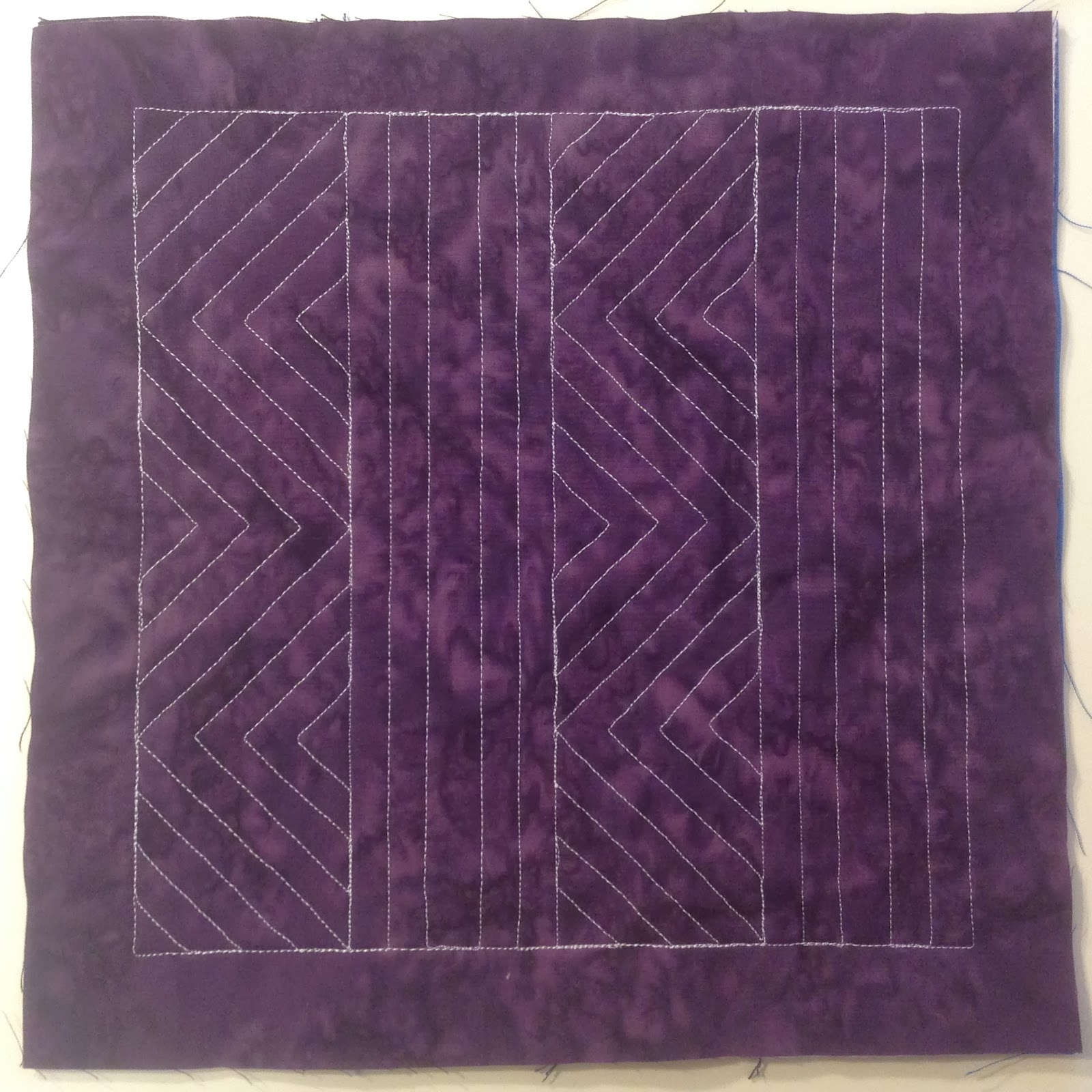10. Quilt a Rail Fence with Straight Lines
Just in case you haven’t joined in yet, you can get started today with the Building Blocks Quilt Pattern. The pattern contains all the cutting and piecing instructions, as well as 42 quilting guides so you can mark you block with the designs like the one above.
Also if you’re just getting started, please don’t feel like you have to rush to catch up from block #1. This Rail Fence block is actually simpler to piece and will be a great place to start this project too!
In this video I share a lot of tips on getting started stitching straight lines and how to keep them straight, even across the full length of the block. Check out the video to get tips on this technique:
In this video I shared a little cheat for hiding mistakes – color them out with a permanent marker!
I stitched out of the ditch a bit and it was over a black fabric section so to hide it, I simply colored my thread black to blend in with the black fabric. After coloring, can you see where I stitched off in the block photo above?
Just in case you’re worried about using a Sharpie on your quilt, you can also use a Micron Pigma Pen, but you’ll have to heat set those marks to ensure they stay permanently. Just remember not to heat set anything until AFTER you’ve washed out your quilting marks!
I’ve personally never had an issue with using a Sharpie, and I have a big collection of colors so no matter what color the fabric, I can easily hide little mistakes like this. And yes, I have used this little cheat on everything from bed quilts to show quilts!
Do understand that what you see as perfect stitching over a perfect quilt at a quilt show might actually have quite a lot of mistakes, but skill and creativity are used to hide them from sight. If you catch yourself feeling really bad about a mistake, instead of considering how to rip it out, start thinking about how you can cover it up.
Adding more thread, fabric, ink, or decorative embellishments like buttons or hot fix crystals to your quilt are just a few ideas for ways you can hide little mistakes quickly rather than picking up your seam ripper.
Let’s go quilt!
Leah Day



You are SO CUTE! Thank you for these videos!
You mentioned again that machines may not like a certain direction. How does this affect stippling? (Or any other multi-directional design.) Do you just figure that it is a short enough distance to not matter? Do you try to be mindful of that direction and take more care when you have to do it?
Hi Rebecca – Yes, that's exactly right. All machines have limitations and you just have to figure out how far you can push it. For a design like stippling, you will stitch in all directions for 1-2 inches, which usually doesn't cause issues for your machine. However if it REALLY doesn't like to stitch backwards, just consciously limit how much you move in that direction. You can still definitely quilt that design, but it may be more of a right, left, down movement than a forward and back movement. Does that make sense?
Cheers,
Leah Day
Have you done a qayg? I'm doing my second, but want to choose a fmq design that-when joined to the other blocks-
will appear somewhat "all over " I'm stumped for a solution.
Can you, please suggest an approach?
Yeah, I'm pretty stumped on that one too. Technically it's not a design, but a technique you're looking for. Just start playing with stitching designs in squares or panels and see what you can come up with. There's no harm in playing around with quilting and see what happens!